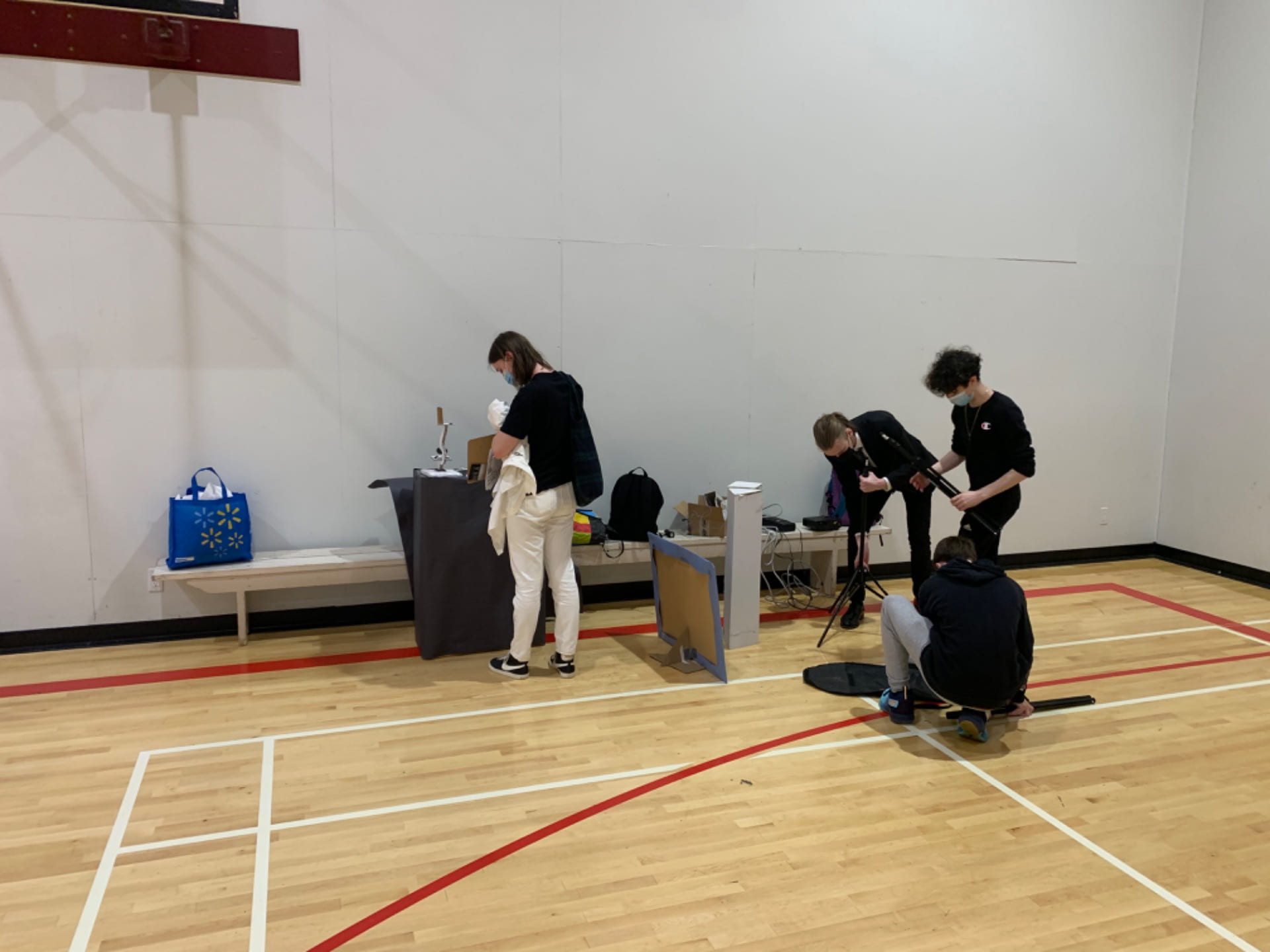For the Second time in PLP, I participated in the Destination Imagination Tournament. The first time was pre-Covid back in March 2020. You can see that post here. Essentially, DI is a tournament where many teams from many different schools compete in a few specialized challenges. The 4 challenges were improv, scientific, fine arts, and technical. Our group was assigned to the scientific challenge called “Up-Close”. In my group was Keenan, Liam, Nathan, Nya, and Ryan. Our group name was “Yes” since it was a great way to stay positive.
The Design Phase:
In the design phase, teamwork was he most important aspect. We realized this, and arranged a meeting to discuss important parts of the challenge and to organize the coming weeks. We all sat around a table to create a group understanding of the central challenge, and brainstorm ideas for the required elements of the challenge. The required elements were a mysterious object, a microworld, microworld scenery, 2 team choice elements, a light element, and a special microscopy technique. Then, we created a story. Ours was about 3 scientists that got shrunk into a microworld and got attacked by bacteria called Vibrio Vulnificus, but discovered a mysterious object to defend themselves. Our mysterious object was a slingshot acting as an antibody to fight off the bacteria. Our microworld was the Petri dish the 3 scientists were researching before they were shrunk. Our microworld scenery was art projected onto a wall behind us. Our First team choice element was a bacteria costume. The second team choice element was sound effects to add to the story, our microscopy technique was fluorescent microscopy, and finally, our light element was a light sensor illuminating the mysterious object.

The Create Phase:
Now that our group had planned everything we needed for the challenge our next step was to create. Teamwork wasn’t as essential during this step, but communication was critical. We needed to communicate effectively to make sure all the parts of the project would work together. We each split off to create our part of the project based off our strengths. Ryan excels in arts, so she sewed the bacteria costume and designed the microworld scenery. Keenan excels in technical elements. So he designed and created the light sensor system. Nathan is great at research, so he researched all about the microscopy technique, scoring system, and bacteria. Liam works well with everyone, so he worked as a flex member. Nya’s specialty was organization, and worked as our team leader, but also worked as a flex member, creating our team sign, and painting our setup. Finally, as a master of the cardboard, just like DI 2020 where I created a working cardboard mechanical arm, I created a cardboard microscope to represent our fluorescent microscopy technique. I also helped organize the group, suggesting meet up times and requesting reports on how certain parts are coming. Together, we created a final script with everyone’s lines, cues, and scene descriptions.

The Present Phase:
Finally, the last step was to present. In preparation, we met up outside of school, and held many full dress rehearsals. Every rehearsal improving our presentation. In hindsight, we should’ve gotten to this stage much sooner to fully prepare for our final presentation to the solution. In the end though, it mostly worked out and went much better than I expected. We were put into a small room in St. George’s School filled with appraisers. Before we knew it, we were presenting. Cracking terrible puns and getting defeating Vibrio Vulnificus. Unfortunately, the light sensor didn’t work. This didn’t end up mattering though, as we were able to explain how it worked to the appraisers and it only ended up being a minor problem.
In the end, we came 2nd overall, which I’m pretty pleased with. Our team was able to work together efficiently, to find creative solutions to problems presented to us. If I were able to repeat the whole experience again, I would have taken more initiative earlier on to organize our group so we could spend less time thinking, and more time doing. Resulting in more rehearsal time at the end and more testing time for each component of the solution.
As always, DI is an incredibly beneficial experience. I learned many impactful things, but also many intangibles that you wouldn’t be able to get out of any other project. The main thing I learned was how to organize I team. A skill I’ve been working on since the start of grade 8. Teamwork is the most important part of PLP, but it’s useless without organization. Throughout the project, I was able to organize our group by creating simple to follow to do’s, adding deadlines, checking in with each group member on how parts are coming along, and organizing meet ups to work together and rehearse.

Leave a Reply